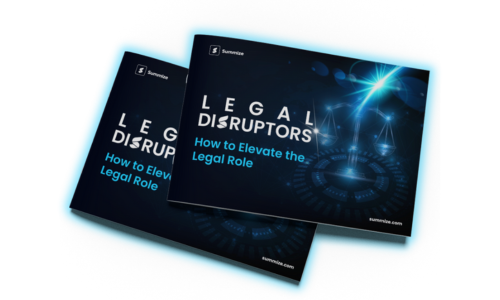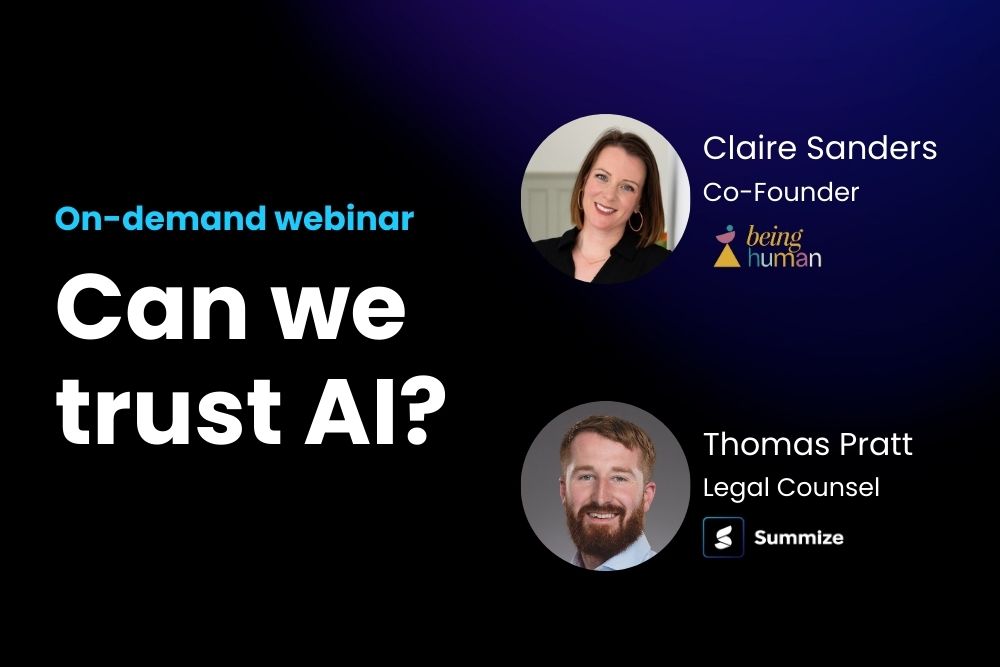How to choose the best CLM: Brandon Tatum
We spoke with Brandon Tatum, an accomplished legal professional who shares valuable insights on choosing the best CLM software.
September 25, 2023
November 25, 2025
Contract Lifecycle Management (CLM) has become a cornerstone of modern business operations. In an increasingly complex and fast-paced business world, effective contract management can mean the difference between success and setbacks. To help you navigate the landscape of CLM software selection, we spoke with Brandon Tatum, an accomplished music and entertainment executive with extensive legal expertise who shares valuable insights on how to choose the best CLM software to match your unique business needs.
Understanding the importance of CLM
CLM is a relatively new player in the tech space, and it already plays a pivotal role in business, recently being branded by Gartner as a must-have, rather than a nice-to-have. But it’s important to understand why the surge in CLM offerings has taken organisations by surprise.
Contracts are the lifeblood of business relationships. They govern everything from client agreements to vendor partnerships and employee relationships, and effective and efficient management of contracts, from request to renewal can bring several advantages:
- Enhanced efficiency: CLM tools are designed to streamline and automate repetitive work such as contract reviews, saving time and costs on already stretched resources. This allows legal teams to focus on high-value strategic work rather than being inundated with low-value contractual tasks.
- Risk mitigation: CLM tools centralise contracts across the business, providing better visibility into contractual data and active agreements. This allows stakeholders to make decisions based on contract risk and opportunity and ensure every contract is fully legal and company compliant.
- Better collaboration: CLM software centralises contracts across the business making them accessible to business stakeholders. This promotes enhanced cross-functional collaboration, fostering stronger relationships with internal stakeholders and faster contract cycles.
- Intelligent insights: CLM can dive into contractual data with prevision, surfacing key information which is often hidden away. These intelligent insights combined with data-driven reports and analytics empower business leaders to make better-informed decisions based on contract data including refinements to internal processes which may be causing delays or bottlenecks.
Establish your needs!
Selecting a CLM is no easy task! Companies often jump straight to a demo with a vendor even before they have identified the need for a solution.
Brandon highlights that as appealing as this may be, the first stage of your CLM journey should be to define your organisation's specific needs and objectives. Individuals should collate with stakeholders across the business to identify the critical business requirements, use case and tech readiness. Brandon suggests considering the following factors:
- Contract volume: Assess how many contracts your organisation manages regularly. Some CLM solutions are designed for a high volume of contracts, while others are more suited for smaller-scale operations.
- Industry: Every industry is different, and they may require a CLM with niche features that will allow them to comply with any specific regulation and contract types.
- Scalability: As a business grows, it will naturally have more contracts to manage. Considering the potential growth of the business, does the chosen CLM have the capacity to support future growth plans?
- Integrations: What type of integrations does the tool offer? Consider your existing tools and apps that the business users and if the CLM can integrate processes into them, consider things such as collaboration, CRM, accounting and ERP software.
- Key features: What are the key features required to address your specific use case and any potential business growth? Be sure to evaluate features such as self-serve contract creation, repository storage, collaborating tools and reporting capabilities.
Secure a budget
As with any new technology implementation, CLM requires a budget, and securing a budget is one of the most pivotal aspects of the decision-making process.
In-house legal departments often grapple with the challenge of delivering cost-effective solutions rather than being seen as a cost centre, making budget considerations paramount. To strike the right balance, it's essential to harmonise cost-consciousness with the quality and effectiveness of the chosen CLM solution. Remember that investing in a robust CLM solution can yield significant returns in terms of efficiency and risk reduction!
CLM tools are no longer used in isolation, they are placed at the centre of the business and used by legal and their counterparts, from sales to finance. Brandon suggests a collaborative approach to securing a budget by involving key stakeholders from various departments. This inclusivity ensures that the budget factors in the constraints and priorities of all teams that will utilise the CLM.
To help you calculate the ROI of your CLM tool, take a look at Summize's budget proposal template and CLM buyer's guide.
User-friendliness
One of the first steps in ensuring the successful rollout of technology is ensuring that it’s going to be adopted by the end user.
In his insights, Brandon underscores the importance of a CLM system that boasts an intuitive and user-centric interface. Pointing out that a user-friendly CLM platform that is designed with the end-users in mind greatly aids in the adoption process within an organisation. It reduces the learning curve, making it easier for team members to embrace and effectively use the software in their day-to-day operations.
A CLM that is overly complex or confusing can quickly lead to resistance among end-users, impacting productivity and even undermining the intended benefits of CLM implementation.
Organisations can overcome this challenge by involving end-users in the selection process. By doing so, they can gain valuable feedback on what features or functionalities are most important and will have the biggest impact on delivering value.
In essence, the perspective on user-friendliness revolves around the idea that a user-centric approach to CLM selection and implementation is crucial for its success.
Evaluating the user-friendliness of a CLM solution is also paramount in identifying if it aligns with the organisation's goals of efficient contract management and collaboration. A user-friendly system enhances adoption, reduces training time, and ultimately contributes to improved productivity and reduced errors in contract management processes.
Implementation
Implementation can be tricky, but it’s critical to the success of your project! With 77% of legal tech implementations failing, a clear and detailed plan is fundamental to ensuring a successful rollout. Brandon suggests that organisations shouldn’t rush into implementation, but instead should take a staggered approach and invest time in planning and setting achievable milestones similar to the steps below.
- Plan Ahead: Before looking to implement a CLM system, Stakeholders should collate to create a detailed plan that maps out the process from start to finish. The plan should include defining roles and responsibilities, milestones, and establishing a timeline.
- Migration: If you're transitioning from manual processes or another system, carefully plan how existing contract data will be migrated into the new CLM system. Gather your existing agreements to review and remediate existing templates. If they are currently causing you issues, simply uploading them to a new operating system won’t solve your problems, it will just create more!
- Allocate Resources: Allocate the necessary resources, including personnel and budget, to support the implementation process. We know from experience that Implementation projects need a champion. Ultimately, they will be the name behind the project in your business. It’s a great opportunity to champion change and to drive a project that will have a massive impact on efficiencies.
- Test and Refine: Before going live, conduct thorough testing to identify and address any issues or bugs in the CLM system. Refining the system based on feedback is essential for a smooth transition to digital contract management.
- Provide Ongoing Support: Implementing a CLM system is not a one-time event! As any business grows, its requirements and processes will alter. Brandon emphasizes the need for ongoing support and training to ensure that the system continues to meet the organisation and its adapting needs.
In today's landscape, selecting the right CLM software can yield significant business-wide returns, from enhanced efficiency to cost savings and risk mitigation. But by taking onboard the advice contained within this article, you can navigate the selection process with confidence, ensuring that your chosen CLM software aligns with your organisation's needs, budget, and longer-term goals.
Remember, the right CLM software isn't just a tool; it's a strategic asset that can drive operational efficiency, reduce risks, and propel your business toward success!
Summize and Contract Management
Summize was founded by a previous General Counsel, looking to address the pressing need to bring contracts into the digital age. Like many legal teams facing a lack of time, contracts are long, complicated, and manual, which takes up too much time.
Summize is a contract lifecycle management tool that incorporates contract workflows and processes into existing utilised business tools. We still facility every step of the contact lifecycle, but we do so in the tools that your business already uses and loves, like Teams and Slack. This approach ensures maximum use adoption, faster cycles, mitigated risk, and business wide efficiencies.
Ready to experience Summize
Simplify and accelerate the entire contract lifecycle without replacing existing ways of working.
Discover even more!
Explore more about contracting and CLM in our ultimate contract guides








